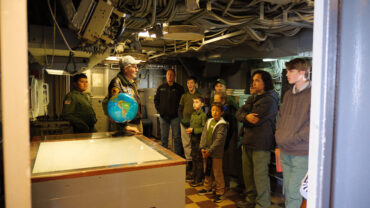

(OCTOBER 9, 2018) — With all due respect to St. Sebastian, I think it’s time for a new patron saint of sports. If you’re not familiar with this third-century martyr, he’s the one typically portrayed with dozens of arrows protruding from his body.
Now, don’t get me wrong, Sebastian is not one to be trifled with. He was not martyred once—but twice! He joined the Roman army in 283 AD and distinguished himself as a remarkable soldier. He was promoted to serve in the Praetorian Guard to protect Emperor Diocletian.
Already a Christian, Sebastian converted many to the faith while serving the emperor. When Diocletian discovered Sebastian was a Christian, he condemned him to death. His fate? The soldier was to be the object of sport. His fellow soldiers, skilled archers, used him as target practice.
After Sebastian’s body was riddled with arrows, they left him, believing he was already dead. A Christian woman named Irene nursed him back to health. Months later, Sebastian sought out the emperor who was shocked that he had been “brought back to life.” This time he made no mistake and had Sebastian beaten and thrown into the sewers where he died.
Sebastian has served the Church well during his 1700+ years as patron of sports, but new eras deserve new heroes. No one has done more to elevate the place of athletes in the Church—and the eyes of the world—in the past thousand years than Pope St. John Paul II.
John Paul delivered 34 pastoral statements published on sports during his extraordinary pontificate from 1978 to 2005. A remarkable athlete himself (he played volleyball and soccer, hiked, swam, cycled, and skied), John Paul provided great “encouragement to those who desire to combine the discipline and motivation of athletics with the spiritual practices of prayer and meditation. The whole purpose of athletics is, in fact, to aid the mind in the search and communication of Truth.” (Source)
The pope had this to say in 2004:
St. Paul the Apostle proposed the image of the athlete to the Christians of Corinth in order to illustrate Christian life and as an example of effort and constancy (1 Cor. 9:24-25). Indeed, the correct practice of sport must be accompanied by moderation and training in self-discipline. The Christian can find sports helpful for developing the cardinal virtues of prudence, justice, fortitude, and temperance in the race for the wreath that is “imperishable,” as St. Paul writes. (Source)
Drawing deeply from Paul, the Holy Father encourages a sports culture that will help people rediscover the full truth about the human person. His advantage over Sebastian in claiming the Patron Saint of Sports title is that he had a large platform from which to teach—and that he lived in the modern era where he understood sports in the 21st century with all its flaws and potential.
In our time, organized sport sometimes seems conditioned by the logic of profit, of the spectacular, of doping, exasperated rivalry, and episodes of violence. It is also your task to proclaim and to witness to the humanizing power of the Gospel with regard to the practice of sport, which if lived in accordance with the Christian outlook, becomes a “generative principle” of profound human relations and encourages the building of a more serene and supportive world. (Address to members of the Italian Sports Centre, June 26, 2004)
Members of the Troops of St. George are particularly invested in this because the organization lives outdoors. John Paul elevated sports and competition to a new level. He called on athletes to use their gifts to bring out the best in humanity and to understand and exercise their God-given potential. He saw sports as a means to build a more peaceful planet and, most importantly, to bring souls to the Lord.
Pope John Paul the Great, Patron Saint of Sports. Has a nice ring to it, don’t you think?
PATRICK NOVECOSKY is a seasoned Catholic speaker, journalist and thought leader who runs NovaMedia and blogs at The Praetorium and for TSG in collaboration with iAmplify.



